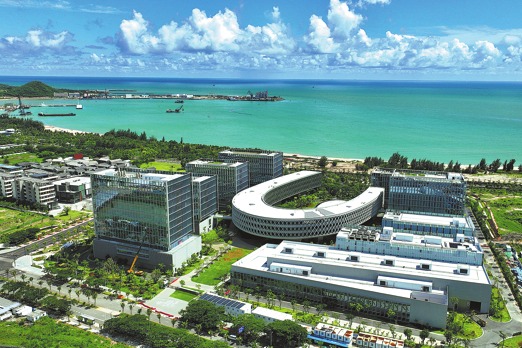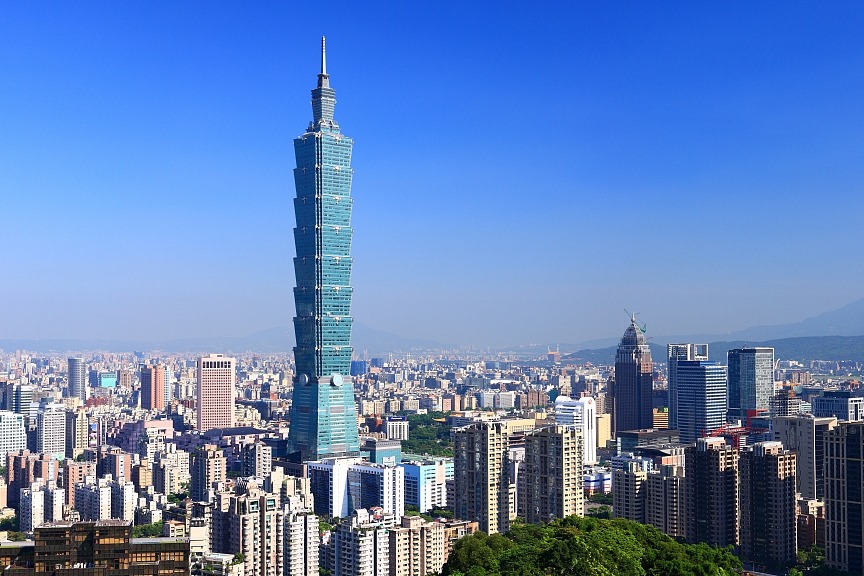Arrogance, bias of IP accusations


As an effort to demonize China and justify its ongoing trade spat with China, the White House issued a report on June 19, 2018, titled How China’s Economic Aggression Threatens the Technologies and Intellectual Property of the United States and the World. Bloomberg described the report as the “latest salvo in the trade war between the world’s two largest economies”, but there is more to it than that: distortion of the truth and the facts and the contortion of them into threats not only to the US but also to the world.
The report grossly catalogs the “economic aggression” by China against the US, and untruthfully documents the so-called “aggressive acts, policies, and practices” that the report bills as falling “outside global norms and rules (collectively, “economic aggression”). The arrogance embedded in the report results in a one-sided polemic that is full of prejudice and stereotypes. The report identifies “two categories of economic aggression”: first, acquiring key technologies and intellectual property from other countries, including the United States, and second, capturing the emerging high-technology industries that will drive future economic growth and advancements in the defense industry.
US report full of fatal errors
The broadly defined “economic aggression” in the report betrays the US’ fundamental lack of confidence. The report also reflects distorted perceptions and conceptualization of what is happening in China. Among the fatal errors the report contains are accusations against China’s IPR practices, such as alleged IPR theft and forced technology transfer, which are an unjust and untruthful characterization of China’s technological achievements over the past 40 years of reform and opening-up and the continual development of its own IP.
Anyone who is not blinded by ideology will admit the remarkable progress China has made in science and technology, and see through the falsehoods of the allegations being made by the Donald Trump administration. Here are some of the facts that speak loud and clear about the legitimacy of China’s IP development.
1. China is now the world’s second largest patent filer. According to the recent report by World Intellectual Property Organization, Chinese companies and individuals filed a total of 48,882 international patents in 2017, up 13.4 percent on the year before. The US kept the top ranking, which it has held for the past four decades, with US-based companies and individuals filing 56,624 applications.
2. China’s spending on R&D was 2.15 percent of its GDP in 2017. About 1.76 trillion yuan ($ 270 billion) was invested in innovation-driven R&D, which explains China’s top ranking in patent filings. This spending is an aggregation of R&D investments by all kinds of enterprises and institutions.
3. China is in the top ranking of payments for use of foreign IPR within its borders. Nicholas Lardy of the Peterson Institute for International Economics notes that China ranks fourth in the world in payments of licensing fees and royalties for the use of foreign technology, well behind Ireland, the Netherlands and the US, but ahead of economies such as Japan, France, the United Kingdom, Canada, Germany, Singapore, South Korea, and India. China’s payments reached nearly $30 billion last year, a fourfold increase from a decade ago.
4. China is also a licensor of technologies. According to the latest data as released by the State Administration of Foreign Exchange, foreign payments for Chinese IPR licensing fees and royalties reached a record high of $4.77 billion in 2017, an increase of 311.5 percent over the payments in 2016. Manufacturing technologies contributed to nearly 80 percent of China’s revenue from IPR licensing and royalties totaled $3.79 billion.
As WIPO chief Francis Gurry explained to journalists at the time of WIPO report release, “One cannot but notice that there has been a remarkable transformation in the Chinese economy, and that China has gone from a position of being largely a user of technologies to a producer of technologies.”
5. Chinese companies are the key players and drivers in China’s IPR development. A McKinsey Quarterly report said, “A wide range of companies have begun mounting challenges in sectors traditionally the preserve of US, European, Japanese, or South Korean businesses. Beijing Genomics Institute, for example, the world’s biggest genetic-sequencing company, now claims to account for roughly 50 percent of global capacity and probably sequences more genetic material than Harvard University and the Massachusetts Institute of Technology combined, while developing some of the world’s most advanced biologic-computing models”.
Chinese companies are the key players and drivers of China’s innovation. Huawei was the top corporate filer of patents globally in 2017, filing 4,024 patents, followed by ZTE Corporation, which filed 2,965. Huawei and ZTE combined accounted for 14.3 percent of China’s international patent filings.
6. China is expected to become the top patent filer in three years’ time. China has picked up its speed of innovation and is the only country to record double digit growth in its patent applications in 2017, and has posted growth higher than 10 percent every year since 2003. WIPO forecasts that China will “overtake the US within three years as the largest source of applications filed under WIPO’s Patent Cooperation Treaty”.
7. China is now known as a more favorable venue for IP litigation because of the speed of its judicial process. This is the conclusion of a PricewaterhouseCoopers study, which found that Beijing’s IP court concluded cases within 125 days on average, compared with 18 months in Europe. In the United States, the median time-to-trial alone is 2.4 years for patent litigation.
These facts speak louder than the false allegations coming from the White House.
Likewise, the accusation that China forces technology transfers does not hold water. The report fails to produce a single piece of evidence, and its claims in that direction are pure speculation or paranoia stemming from the old-fashioned Cold War mentality of some in the US administration. As Ambassador Zhang Xiangchen pointed out at a session of World Trade Organization’s dispute settlement body: the US Section 301 investigations have produced no evidence that the transfer of technologies is a requirement in China’s law, nor have they provided evidence that China has used technology transfer as a precondition for market access.
Foreign firms typically market oriented
In the process of China’s reform and opening-up, foreign companies have come to China with ambitious plans to develop its vast market. Technological cooperation has naturally been brought to the negotiation table, and the deals have been made on the basis of business assessments and evaluations, with foreign companies duly considering their own interests and benefits. The deals are typical market-based decisions made with goodwill and in the spirit of contract. As is known to all, foreign companies have gained bountiful rewards. A Deutsche Bank report revealed that the subsidiaries of US companies recorded sales revenue of $223 billion through their operations in China.
The true take-away from the White House report is its fear that China will catch up with the US. China on its part does not see that happening any time soon, as it still lags behind the level of US technologies, and the process might be slowed by the obstructions and barriers erected by the US. However, it will not be stopped.
As on many issues, the US is playing a blame game, making China the scapegoat for its economic problems. It echoes a similar message the US sent to Japan back in 1985 when the Plaza Accord was signed. Thirty years ago, US trade hawks were focused on Japan’s economic success, in fear of the achievements made by Japan in the global economy. The US accused Japan of engaging in unfair trade practices and industrial policies that had resulted in a bulging job-killing trade surplus. The US filed 24 cases for Section 301 investigations against Japan, almost all of which resulted in Japanese concessions. In the aftermath of the Plaza Accord, the Japanese economy went on a roller-coaster ride before it fell into prolonged stagnation, which is now described as its “lost decades”.
China will not be bullied like Japan
Will China follow the fate of Japan? The answer is no. China is not Japan and it will not yield to US pressure, even if that comes at great cost to itself. That has been demonstrated throughout the country’s history. If China is threatened, China will respond forcefully against all kinds of threats.
The White House should reflect that when you think that everyone around you is wrong and only you are right, your arrogance blocks the flow of truth and facts. It is losing credibility by trying to construe China as a threat to the world.
The author is deputy chair of the Expert Committee of the China Association of International Trade.
- IMF maintains global growth forecasts, warns of escalating trade tensions
- US claims of unfair practices a 'distortion'
- China refutes US allegation on intellectual property issues
- US accusing China of forced technology transfers, IPR theft unacceptable: MOC
- Demonizing China's IPR shows willful US blindness to facts


































